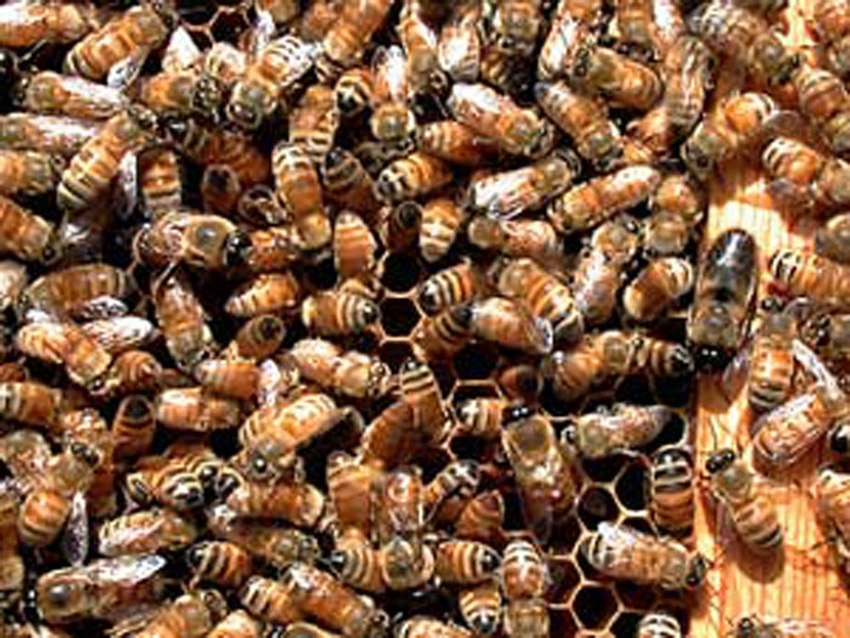
The following is the text of the cooperative agreement on bee stewardship recently adopted by Mississippi Agricultural Organizations:
Cooperative Standards of the Mississippi
Honey Bee Stewardship Program
The program is program presented and adopted by the following stakeholders: Mississippi Beekeepers Association, Mississippi Farm Bureau Federation, Mississippi Agricultural Aviation Association, Mississippi Agricultural Consultants Association, Mississippi Department of Agriculture & Commerce, and Mississippi State University Extension Service.
Background:
In light of global decline of honeybee populations, discussions were held among stakeholders from beekeeping and agriculture producers to discuss ways to foster a better working dialogue among the state’s row crop farmers and beekeepers, all in the spirit of coexistence and cooperation. Deliberations led to the development of a communication effort armed with a set of standards or general operating suggestions targeting the state’s beekeepers, farmers, and other pesticide applicators. This general outline is a product of these deliberations and is not intended to account for all aspects of the relationship between cooperators (farmers and beekeepers), but will serve as a basic guideline for cooperative standards that should exist between row crop farmers and beekeepers when bees are located in or near row crop production areas. Mississippi hopes to be proactive in advancing educational efforts leading to sustainable practices that are beneficial to beekeepers and producers.
Communication and Education Start With Everyone:
· Know Your Farmer, Know Your Beekeeper: Farmers and beekeepers are encouraged to foster a strong level of communication with each other during any cooperative arrangement. Both the farmer and beekeeper should exchange some very basic information with each other. This information includes: name, phone number, location(s) of hives on the farm property, commodities grown in the fields adjacent to hive locations, and general information concerning insecticides applied on these commodities and timing of these application during the normal growing season. Cooperators are encouraged to have open dialogue about this information every year to foster that strong level of communication that should exist in such arrangement.
· Mississippi “Bee Aware” Flag: Conceptualized and developed by Mississippi Farm Bureau Federation, a unified flagging system will be utilized in the state of Mississippi to clearly identify hive locations that are near adjacent fields. The goal of this program is for all beekeepers, farmers, and other pesticide applicators to be familiar with this flag, its use, and application to provide added safe guards to protect bees in areas of pesticide use. The flag should be placed in a location that can be highly visible by farmers operating ground driven equipment or by the aerial applicators. The “Bee Aware” flag will serve as a constant reminder that bees are in the vicinity and care should be taken with insecticide applications. The beekeeper should work with the farmer to select the best area near the hive to place the bee flag so that it is visible by both the ground and aerial applicator.
· Organizational Outreach Component: The stakeholders listed above have all committed to educate their respective members on the components of the Mississippi Honey Bee Stewardship Program and advancement of its goal and purpose.
Important Considerations for Farmer-Beekeeper Partners:
· Hive Placement: In any strong working cooperative agreement between farmers and beekeepers, all parties will discuss proper hive locations on the farm property where the bees will be kept beforehand. The farmer knows the property and can best help mitigate damage from farm equipment and other obstructions. The beekeeper knows the best honey bee habitats and can help select an apiary location that: (a) uses natural barriers such as tree lines to mitigate against exposure to insecticide drift, (b) will best facilitate the entrances to hives from directly facing fields, and (c) are not too close to the immediate edges of fields. Beekeepers should discuss the bee yard or apiary location with the farmer and come to an agreement that works for both parties.
· Hive Identification: The beekeeper should have a placard listed in on a prominent hive within an apiary that clearly identifies the owner of the hives with emergency contact information. This placard should be highly visible from a distance.
· Bee Flag Placement: The beekeeper should work with the farmer to select the best area near an apiary to place the bee flag so that it is visible by both ground and aerial applicators.
· Everyone Should Know Apiary Locations: Both the beekeeper and farmer should generate and review a comprehensive list of all apiary locations that occur on the farm property annually. This is especially important if hives are moved from more traditional locations of several years to newer locations. It might even be helpful to pencil in the apiary sites onto a map.
· GPS Locations: It is encouraged that beekeepers provide GPS coordinates to the farmer and his applicator to show exact locations of hives on the farm property.
· Notify Ground & Aerial Applicators of Hive Location(s): The farmer should make his employees (or other contractual parties) aware of all apiary locations and the associated bee flags on the farm property and should notify his aerial applicator (if applicable) of apiaries on farm property as well.
· Timing of Insecticide Applications: When possible, farmers should consider applying insecticides as late in the afternoon as possible on fields that are immediately adjacent to hive locations. Selecting this time to apply insecticides in sensitive areas near hives will help mitigate many risks of bee damage. Further, insecticides should always follow label guidelines and be made when pests reach economic threshold levels.
· Wind Direction: Insecticides should only be made when winds are blowing away from the hive location(s).
Contact Information:
For specific questions concerning the Mississippi Bee Stewardship Program, contact:
Dr. Jeff Harris, MSU Extension Apiculturist, at 662-325-2976 or [email protected]
Dr. Angus Catchot, MSU Extension Entomologist, at 662-325-2085 or [email protected]
About the Author(s)
You May Also Like




